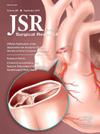成人和儿童胰腺创伤后非手术治疗与手术治疗的预后因素和结果:一项系统综述。
IF 1.7
3区 医学
Q2 SURGERY
引用次数: 0
摘要
本系统综述旨在评估成人或儿童胰腺创伤患者不良预后的预后因素,并比较非手术治疗(NOM)和手术治疗的临床结果。方法:截至2025年5月6日,对5个数据库进行系统评价。研究评估胰腺创伤患者,确定预后因素,或比较手术与NOM。研究的结果包括住院死亡率、住院并发症和重症监护病房的住院时间。结果:16项研究符合纳入标准,分析了14000多例患者。与死亡率增加相关的预后因素包括休克(优势比:3.31,95%可信区间:1.16-9.42,0.022)和脓毒症(优势比:43.47,95%可信区间:4.15-455.75,P = 0.002)。此外,高度损伤(美国创伤外科协会评分≥3)导致儿科患者NOM失败率增加(P = 0.0169)。无论损伤等级、类型或年龄组,不同治疗方法的死亡率均无差异。在钝性创伤患者(37.5%对5.2%,P < 0.001)和重度损伤儿科患者(44%对0%,P < 0.001)中,NOM导致胰腺并发症(包括假性囊肿)的发生率增加。尽管在成人和儿童患者中,切除可减少较高程度创伤的并发症(33%对77%,P = 0.01),但在切除和非切除手术之间没有显著差异。结论:损伤严重程度增加等预后因素与较高的死亡率和非手术失败率相关。在成人和儿童高级别钝性胰腺创伤患者中,NOM的并发症增加。高度胰腺损伤患者行胰腺切除术后预后改善,这证明了胰腺切除术在这些患者群体中的安全性。本文章由计算机程序翻译,如有差异,请以英文原文为准。
Prognostic Factors and Outcomes of Nonoperative Versus Operative Management in Adult and Pediatric Patients Following Pancreatic Trauma: A Systematic Review
Introduction
This systematic review aims to evaluate prognostic factors of poor outcomes and compare clinical outcomes between nonoperative management (NOM) and operative management in adult or pediatric pancreatic trauma patients.
Methods
A systematic review of five databases was conducted through May 6, 2025. Studies assessing pancreatic trauma patients, identifying prognostic factors, or comparing operative versus NOM were included. Outcomes of interest included in-hospital mortality, in-hospital complications, and intensive care unit length of stay.
Results
Sixteen studies met the inclusion criteria and analyzed over 14,000 patients. Prognostic factors associated with increased mortality included shock (odds ratio: 3.31, 95% confidence interval: 1.16-9.42, 0.022) and sepsis (odds ratio: 43.47, 95% confidence interval: 4.15-455.75, P = 0.002). In addition, high-grade injuries (American Association for the Surgery of Trauma ≥ 3) resulted in increased NOM failure (P = 0.0169) in pediatric patients. There were no differences in mortality between management approaches, regardless of injury grade, type, or age group. NOM resulted in increased rates of pancreatic complications, including pseudocysts, in patients with blunt trauma (37.5% versus 5.2%, P < 0.001) and in pediatric patients with high-grade injuries (44% versus 0%, P < 0.001). No significant differences were noted between resection and nonresection procedures, although resection resulted in reduced complications for higher grade trauma in adult and pediatric patients (33% versus 77%, P = 0.01).
Conclusions
Prognostic factors such as increased injury severity were associated with higher rates of mortality and nonoperative failure. NOM demonstrated increased complications in adult and pediatric patients with high-grade blunt pancreatic trauma. Patients with high-grade pancreatic injuries treated with pancreatic resection showed improved outcomes, which demonstrates the safety of pancreatic resection in these patient populations.
求助全文
通过发布文献求助,成功后即可免费获取论文全文。
去求助
来源期刊
CiteScore
3.90
自引率
4.50%
发文量
627
审稿时长
138 days
期刊介绍:
The Journal of Surgical Research: Clinical and Laboratory Investigation publishes original articles concerned with clinical and laboratory investigations relevant to surgical practice and teaching. The journal emphasizes reports of clinical investigations or fundamental research bearing directly on surgical management that will be of general interest to a broad range of surgeons and surgical researchers. The articles presented need not have been the products of surgeons or of surgical laboratories.
The Journal of Surgical Research also features review articles and special articles relating to educational, research, or social issues of interest to the academic surgical community.

 求助内容:
求助内容: 应助结果提醒方式:
应助结果提醒方式:


